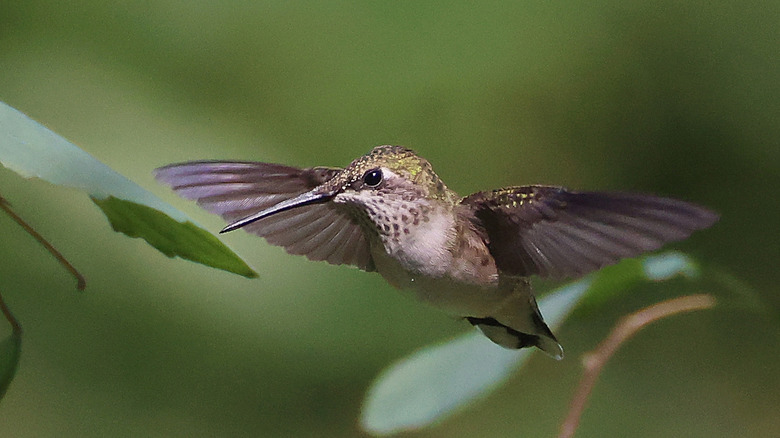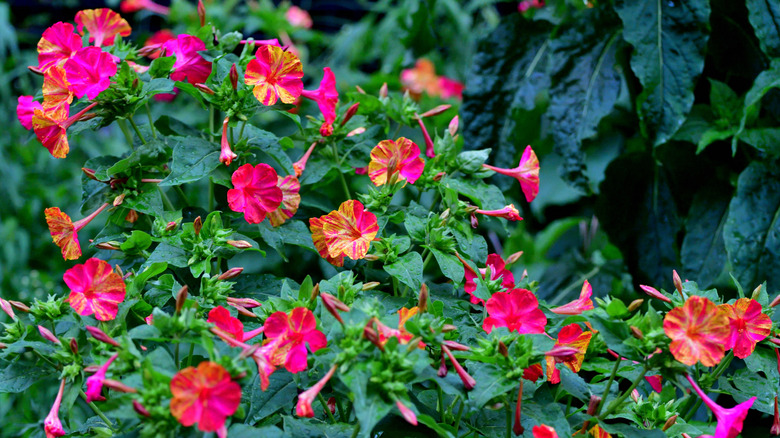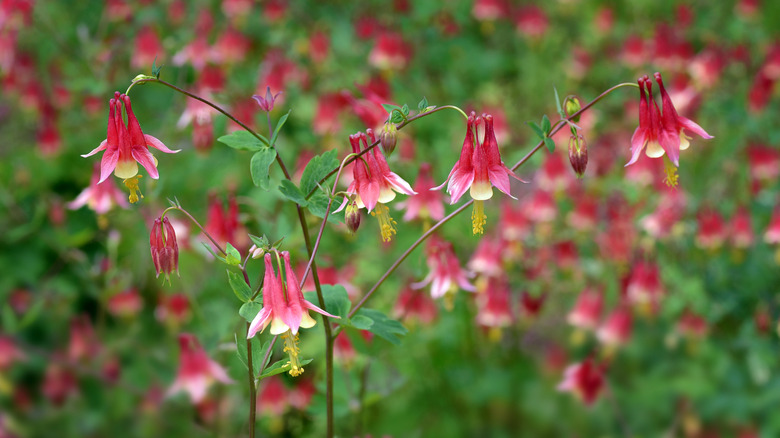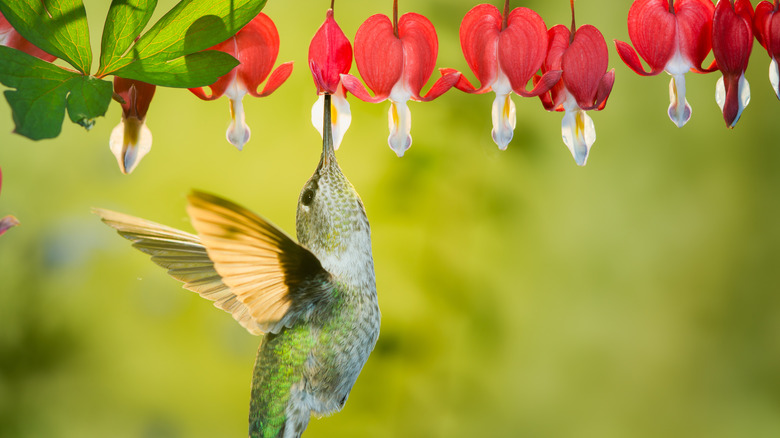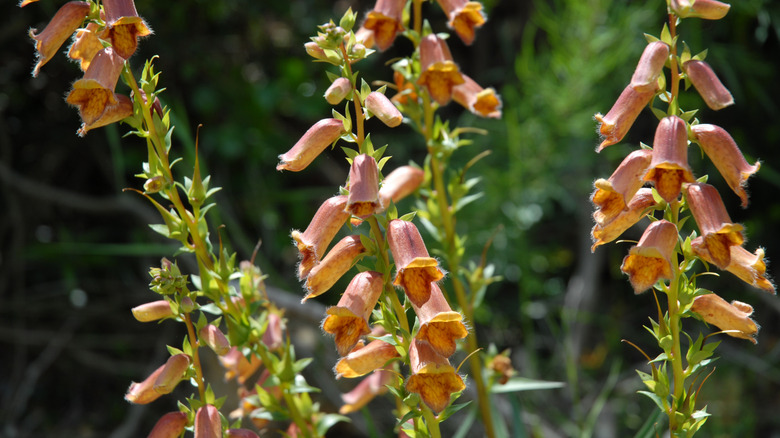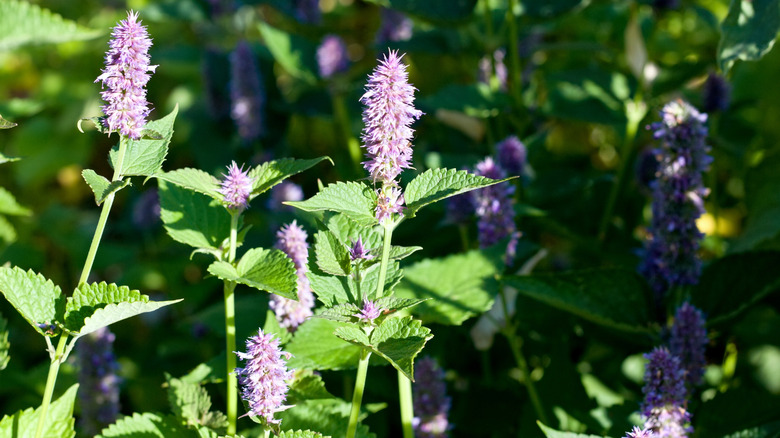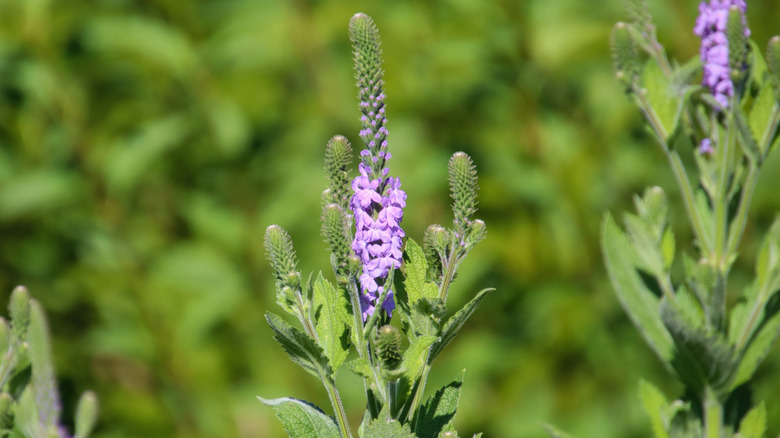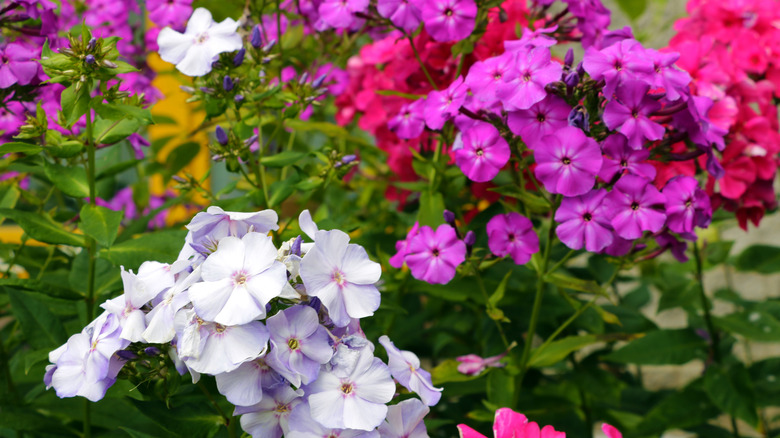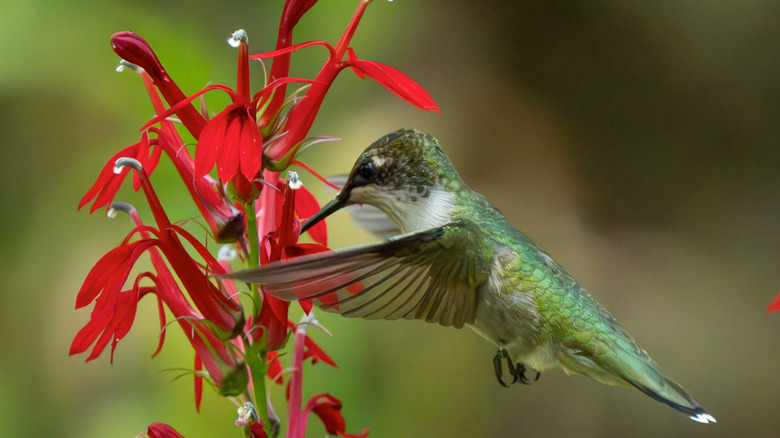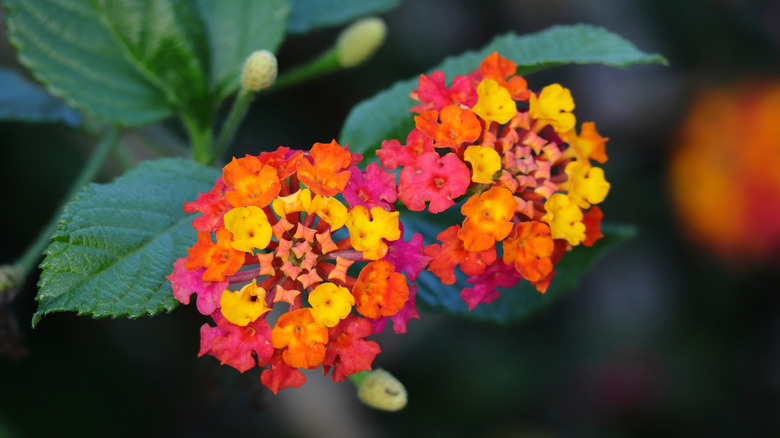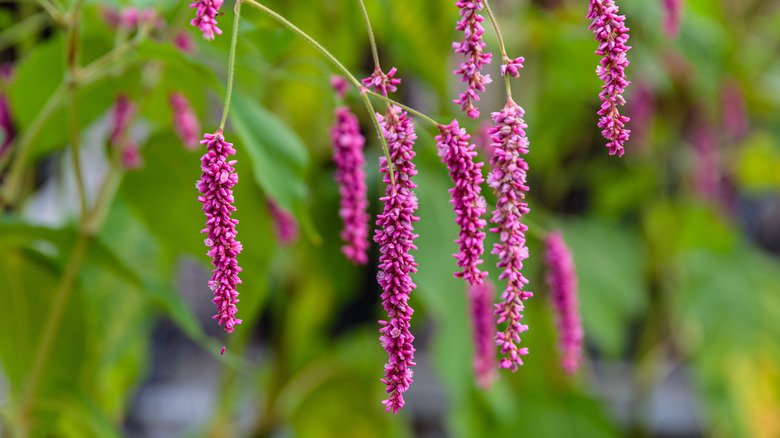10 Dazzling Self-Seeding Flowers That'll Attract Hummingbirds To Your Yard Like Magic
Self-seeding flowers are a great way to turn your landscape into a nectar-filled oasis. These vibrant blooms invite some of the most energetic and captivating birds in the Americas to your garden, but drawing them in can be a challenge of its own if you don't know what they like. The answer, in part, lies in tubular flowers that will transform your space into a hummingbird heaven, especially those in red, orange, pink, and purple hues. These flowers allow hummingbirds to hover and feed efficiently.
Hummingbirds aren't limited to tubular flowers, though. Bell-shaped flowers and open blossoms are also suitable. Hummingbirds rely on nectar-rich flowers, such as hoary vervain and Prince's Feather, for their daily energy. They visit up to 3,000 blooms daily, and because they need a steady supply of fuel to power their rapid wingbeats, the more you can offer in terms of suitable flowers, the more likely they'll linger.
By choosing self-seeding plants with hummingbird-friendly traits, you can create a vibrant, low-maintenance garden that returns year after year with little effort. The right selection will offer constant color, extended bloom seasons, and reliable nectar through spring, summer, and fall. Below, you'll discover how to attract hummingbirds with a selection of fast-growing self-seeding flowers, while avoiding any beautiful hummingbird-attracting plants you'll wish you never grew in your yard.
Four-o'clock
Four-o'clock (Mirabilis jalapa) is a self-seeding flower that attracts hummingbirds with its bright blooms and extended blooming window. Opening in late afternoon, this delicate-looking, trumpet-shaped flower can last through the night to provide a steady nectar source when few other plants do. It acts as a perennial in USDA Hardiness Zones 9 and 10 and is grown as an annual elsewhere by self-seeding in the fall. Thriving in full sun and moist, well-drained soil, it adds color, fragrance, and pollinator appeal to any low-maintenance garden.
Eastern red columbine
Eastern red columbine (Aquilegia canadensis) is a spring-blooming native perennial hardy in zones 3 to 8, with red-and-yellow tubular flowers that are perfectly suited for hummingbirds. Its nodding blooms appear from March to May and provide an early nectar source just as hummingbirds return from migration. The plant thrives in partial shade with moist, well-drained soil and self-seeds, often resulting in new seedlings each year. Though short-lived, it persists through reseeding and tolerates a range of conditions. Its graceful foliage, pollinator value, and deer resistance make it ideal for low-maintenance, wildlife-friendly gardens.
Bleeding heart
Bleeding heart (Lamprocapnos spectabilis) is a perennial charmer known for its pink, heart-shaped blooms that attract hummingbirds in late spring and early summer. Hardy in zones 3 to 9, this plant likes part shade and moist, well-drained soil. The arching stems carry rows of delicate flowers, and the foliage forms soft green mounds. While it may self-seed in damp, cool areas, it's non-invasive and is easy to manage. After blooming, plants often go dormant in summer — especially in hot or dry conditions. Cut back after flowering to encourage new growth or delay dormancy.
Willow leaf foxglove
Willow leaf foxglove (Digitalis obscura) is a woody perennial with striking tubular blooms in shades of rusty orange and gold — colors that hummingbirds adore. Hardy in zones 4 to 8, it flowers from spring into early summer, thriving in full sun or part shade and gritty, well-drained soil. After blooming, leave a few flower spikes in place if you'd like it to self-seed. Its upright stems, narrow leaves, and speckled blooms are drought-resistant. Just avoid wet winter soil, which can be fatal — this plant prefers it dry and sunny, like the conditions in its native Spain.
Anise hyssop
Anise hyssop (Agastache foeniculum) is a showy, self-seeding perennial that attracts hummingbirds with its long spikes of tubular lavender-blue flowers from summer into fall. Native to North American prairies, it grows best in full to part sun and well-drained soil across zones 4 to 8. Its dense blooms offer a steady nectar supply during peak hummingbird activity. This mint-family plant readily self-sows and spreads by rhizomes (underground stems that grow horizontally), making it ideal to quickly fill in pollinator gardens.
Hoary vervain
Hoary vervain (Verbena stricta) is a drought-tolerant native perennial that adds a splash of blue-purple to summer gardens. Its tall, fuzzy flower spikes bloom from mid-July into August, offering nectar-rich blossoms that appeal to bees, butterflies, and hummingbirds alike — especially in mass plantings. This clump-forming plant thrives in sandy, clay, or rocky soil with full sun and good drainage. It self-seeds freely, making it easy to naturalize in meadows or prairie-style beds. Hardy in zones 4 to 8, hoary vervain is a low-maintenance option for gardeners looking to attract pollinators with minimal fuss.
Garden phlox
Garden phlox (Phlox paniculata) is a tall perennial that blooms from midsummer into fall, drawing hummingbirds with its fragrant, tubular flowers in shades of pink, purple, red, and lavender. Hardy in zones 4 to 8, it grows in full sun to partial shade and moist, well-drained soil. While cultivated species won't grow back exactly like the parent plant, garden phlox will self-seed if spent flowers aren't removed. Though prone to mildew, good air circulation helps prevent this problem. It's a beautiful choice for borders, cottage gardens, and pollinator plantings.
Cardinal flower
Cardinal flower (Lobelia cardinalis) is a native perennial with scarlet red, tubular blooms that hummingbirds can't resist. Flowering from mid-summer into fall, its tall spikes light up rain gardens, streambanks, and moist borders. Hardy in zones 3 to 9, it thrives in rich, consistently damp soil and part shade. Plants self-seed readily under the right conditions, helping them naturalize beautifully in wet meadows or woodland edges. Though it's a short-lived perennial, it can be propagated through rosette division or reseeding. Its vivid red flowers stand out among moisture-loving companions and provide a vital late-season nectar source for pollinators.
Common lantana
Common lantana (Lantana camara) is a sun-loving favorite for gardeners who want vibrant color and minimal fuss. Hardy in zones 7 to 11 as a perennial, this shrubby bloomer can also grow as a carefree annual in cooler climates, flowering nonstop from summer to frost. Its tubular blooms in shades of red, orange, pink, and purple are hummingbird magnets, and butterflies love them too. Lantana grows best in heat, humidity, and poor soil.
Prince's feather
Prince's feather (Persicaria orientalis) is a bold, self-seeding flower that will grow tall and attract hummingbirds to your garden with its vibrant, dangling pink flower tassels that bloom from midsummer into fall. This annual grows best in full sun with moist, well-drained soil, this fast grower can reach up to 5 feet tall and reseeds easily under the right conditions. While it's low-maintenance and eye-catching in borders, gardeners in the Southeast should monitor it carefully, as it may spread aggressively and naturalize in some regions.
